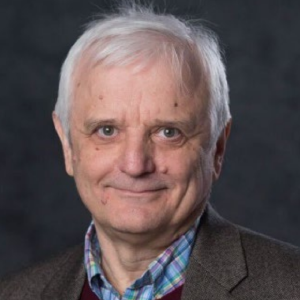Workshop Structural Balance May 2024
Keynote: Political Polarization At the Age of Social Media
Boleslaw Szymanski
Rensselaer Polytechnic Institute, Troy, NY
16 May 2024, 09:30–10:15

Abstract
We all agree that social media has changed the way political information spreads across the internet, but there is paucity of research on how exactly this new way of spreading works. In this talk, we will start by discussing the new patterns of data flow and new roles for users in spreading information and this new model coexists with remnants of the classic two-level propagation. Then, using the polarization model inspired by the Ising model, we discuss how the presence of social media increases polarization. Political scientists have documented increasing partisan division, finding extremist positions to be more pronounced among political elites than among voters, raising the question of how polarization might be attenuated.
In this talk, we introduce a general model of opinion change to see if the self-reinforcing dynamics of influence and homophily may enable tipping points that make reversibility problematic. We also introduced exogenous shocks corresponding to events that create a shared interest against a common threat (e.g., a global pandemic). Phase diagrams of political polarization reveal difficult-to-predict transitions that can be irreversible due to asymmetric hysteresis trajectories. We focus on social media, which has been transforming political communication dynamics for over a decade. Using a billion tweets, we analyzed the change in Twitter’s news media landscape between the 2016 and 2020 U.S. Presidential elections. We then identify influencers, users with the top ability to spread news in the Twitter network. The more influential 2016 users were, the higher was their rate of remaining active and keeping their level of influence in 2020. We also analyze changes in influencers’ real-world affiliations, political biases, and in Twitter users’ choices as to which influencers to retweet and which ideology to subsequently support. We also compare 2020 Twitter dynamic and compare it to Parler dynamic in the same period. We observe that the initial polarization tends to be stable.
Relevant publications
Creation, Evolution, and Dissolution of Social Groups, J. Flamino, B. K. Szymanski, A. Bahulkar, K Chan, and O. Lizardo, Scientific Reports 11:17470, September 1, 2021.
Polarization and tipping points, M.W. Macy, M. Ma, D.R. Tabin, J. Gao, and B. K. Szymanski, Proceedings of the National Academy of Sciences 118(50):e2102144118, Dec. 14, 2021.
Political polarization of news media and influencers on Twitter in the 2016 and 2020 US presidential elections, J. Flamino, A. Galeazzi, S. Feldman, M. W. Macy, B. Cross, Z. Zhou, M. Serafino, A. Bovet, H. A. Makse, and B.K. Szymanski, Nature Human Behaviour 7, March 7, 2023.
Dynamics of Ideological Biases of Social Media Users, M.S. Modi, J. Flamino, and B.K. Szymanski, accepted for IEEE Communication Magazine, 62 2024, available as https://arxiv.org/pdf/2309.15968
